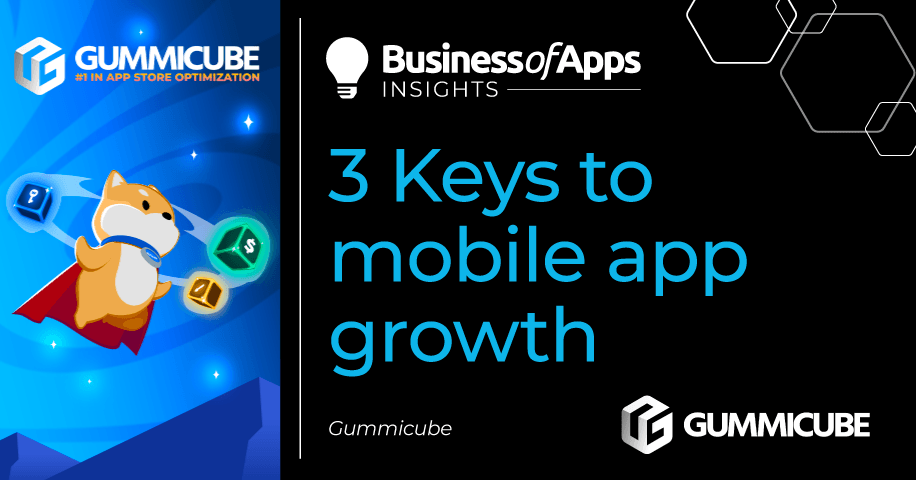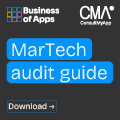Many app developers and marketers are familiar with the basics of App Store Optimization – from keyword and conversion optimization to search ads and A/B testing. However, there are other strategies sometimes overlooked that can significantly impact your app’s visibility, rankings, and conversions.
In this article, we’ll explore three lesser-known keys to mobile app growth through ASO. These strategies go beyond the fundamentals, offering fresh insights into how to optimize your app listing and boost its performance in the iOS App Store and Google Play Store.
In-app analytics for ASO insights
Your App Store analytics provide useful information about your current performance, with insight into downloads, keyword rankings, and reviews. However, you can also find valuable details that reflect user behavior through your in-app analytics.
ASO primarily deals with optimizing your app’s presence on the app stores, but taking a look at what’s working within your app itself can also help you tweak your ASO strategy for increased performance.
Here’s how to make the most of in-app analytics for ASO:
- User engagement: Dive into data on which features users engage with the most and the least. Use this information to optimize your app store listing by highlighting and describing these popular features.
- User flow: Identify where users tend to drop off or abandon your app. This information can guide improvements to the user experience, potentially leading to better reviews and rankings.
- Keyword refinement: Examine the search terms users use within your app’s internal search feature. Incorporate these keywords into your ASO strategy, as they reflect what your users are looking for.
- Conversion funnel analysis: Track the user journey from app store visit to installation and usage. Optimize each step of the conversion funnel by fine-tuning your app store assets and in-app onboarding.
Additionally, you can improve your in-app experience by A/B testing, and continue the cycle of improving your app store listing based on in-app behavior. Read more here about how you can optimize in-app action to help your ASO efforts.
App listing localization
While having a presence in another country can give your app a competitive edge, it should go beyond mere language translation. Localization is key here and it involves adapting your app to cater to the unique preferences, cultural nuances, and regional differences of your target markets.
Here’s how to implement comprehensive app listing localization:
- Cultural sensitivity: Research and understand the cultural norms and sensitivities of your target markets. Tailor your app’s metadata and creatives accordingly.
- Regional preferences: Different countries may have specific feature preferences or color choices. Find trends in competitor app listings and mimic working strategies as you figure out what your users respond well to.
- Local events and holidays: Incorporate local events and holidays into your app’s promotions and updates. This can create a stronger connection with users and potentially boost engagement and conversions.
- Soft launch in a similar market: Some markets can serve as early indicators of success for the main one you intend to expand to. Use them as an opportunity to test your localized app listing before launching.
Learn more about how you can effectively localize your mobilize your app listing with our guide.
Feedback and user content in app listing assets
User-generated content (UGC) can be a powerful asset for your ASO strategy, especially when used in your app store creatives. Positive reviews, testimonials, and content can enhance your app’s credibility and attract more users.
Here’s how to leverage UGC for your app store creatives:
- User feedback: Select compelling snippets from positive user reviews and include them in your app’s description. These quotes can build trust with users who are on the fence about downloading or simply reinforce the positive sentiment expressed across your app listing
- UGC campaigns: Encourage users to create and share content related to your app, such as videos, illustrations, or social media posts. You can run contests or incentives to motivate users to participate.
- Incorporate user stories: Share real user success stories or experiences in your app store creatives. Highlight how your app has positively impacted users’ lives.
- UGC visuals: Use user-generated images or screenshots that showcase your app in action. This not only adds authenticity but also helps potential users visualize themselves using your app.
- Awards and recognition: If your app has received awards or accolades, prominently display them in your app store listing. This can further enhance your app’s credibility and desirability.
Advanced mobile app marketing
While mastering the fundamentals of ASO is essential, incorporating additional ASO strategies can set your app apart in a highly competitive market. Leveraging in-app analytics, implementing comprehensive app listing localization, and harnessing the power of user feedback and content can collectively contribute to app store growth and success.
Time for a MarTech health check
Is your MarTech stack fueling growth or wasting budget? Spot the issues and fix them fast with this free guide from the experts at ConsultMyApp.
Download nowKeep in mind that ASO is a dynamic field, and staying attuned to emerging trends and user behaviors is vital. By incorporating these app marketing keys into your strategy, you’ll be better equipped to navigate the ever-changing landscape of mobile app growth and optimize your app’s visibility, rankings, and conversions.
Need help with your mobile app growth? Get in touch with the ASO experts at Gummicube today!











